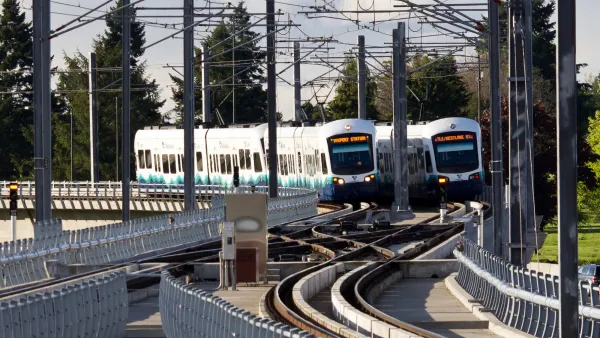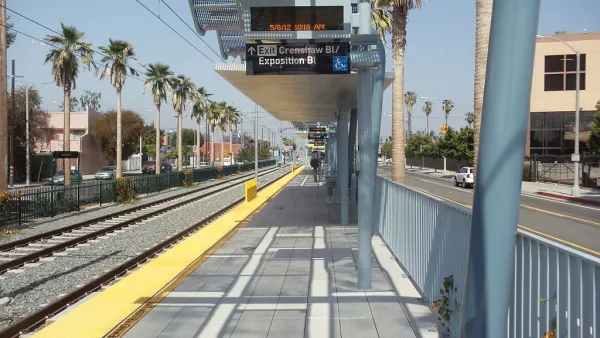The Eno Center for Transportation launched the first institutional investigation of the cost of transit projects earlier this year and recently released its initial findings, with promises for more in-depth case studies to come.

The Eno Center for Transportation released the first product of an initiative launched in late 2019 to study the high cost of public transit projects in the United States, building on the momentum of new public and media attention to the problems of transit construction.
The initial public offering is a database of transit capital construction projects, including "construction cost and timeline data for a total of 171 domestic and international rail transit projects completed over the past 20 years," according to an article on the Eno website that shares insights into the database. "For each project, factors such as number of stations, grade alignment, station spacing, and mode allow for deeper comparisons."
The article lists five key takeaways from the new database:
- Light rail is not necessarily cheaper than heavy rail. Grade alignment, rather than mode, is the major determinant of cost.
- Many rail projects in the United States are relatively inexpensive
- The United States pays a premium for tunneled projects
- Cost variability increases significantly for tunneled projects
- Stations are expensive, but international projects include more of them
More details for each of those takeaways are included in the source article, as well as promises for further research.
FULL STORY: FIVE TAKEAWAYS FROM ENO’S TRANSIT CAPITAL CONSTRUCTION DATABASE

National Parks Layoffs Will Cause Communities to Lose Billions
Thousands of essential park workers were laid off this week, just before the busy spring break season.

Retro-silient?: America’s First “Eco-burb,” The Woodlands Turns 50
A master-planned community north of Houston offers lessons on green infrastructure and resilient design, but falls short of its founder’s lofty affordability and walkability goals.

Delivering for America Plan Will Downgrade Mail Service in at Least 49.5 Percent of Zip Codes
Republican and Democrat lawmakers criticize the plan for its disproportionate negative impact on rural communities.

Test News Post 1
This is a summary

Test News Headline 46
Test for the image on the front page.

Balancing Bombs and Butterflies: How the National Guard Protects a Rare Species
The National Guard at Fort Indiantown Gap uses GIS technology and land management strategies to balance military training with conservation efforts, ensuring the survival of the rare eastern regal fritillary butterfly.
Urban Design for Planners 1: Software Tools
This six-course series explores essential urban design concepts using open source software and equips planners with the tools they need to participate fully in the urban design process.
Planning for Universal Design
Learn the tools for implementing Universal Design in planning regulations.
EMC Planning Group, Inc.
Planetizen
Planetizen
Mpact (formerly Rail~Volution)
Great Falls Development Authority, Inc.
HUDs Office of Policy Development and Research
NYU Wagner Graduate School of Public Service





























